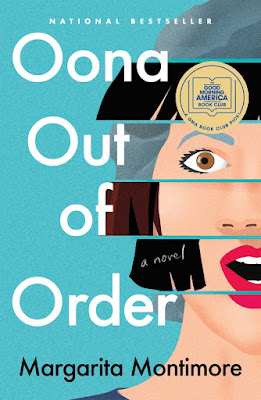This story starts on New Year's Eve 1982; at the stroke of midnight, Oona will turn 19. She expects to be making a decision about whether to go to school in London the next year or stay in Brooklyn and tour for a year with the band she and her boyfriend are in. But when midnight comes, Oona is jerked out of her current situation. She awakens in a lovely house, in her 51st year. She is appalled to see how old she is, and that she is overweight.
Oona is living one year of her life at a time, but out of order (hence the title). She has awakened in 2015. Fortunately, there is a man waiting there for her to explain the situation, and she is living in a gorgeous home. The man is Kenzie and he introduces himself as her personal assistant and friend. She freaks out and he does his best to calm her down.
After that, every year at midnight on New Year's Eve, the same thing happens; Oona either jumps ahead to a future year or goes back to an earlier year that she has not experienced before. It makes poor Oona very cranky to be jerked off to a different year in her life every New Year's Eve.
This is a time travel book, but there is no explanation of why this phenomenon is happening to her, thus it is more fantasy than science fiction. I enjoyed this a lot while I was reading it; I gave it five stars, and I still think it deserves that rating, but I am pretty generous with my ratings. So as far as entertainment value goes, it did very well.
Family is a recurring theme in this book. Of course, I loved that part of it. Most of the time I liked Oona's mother Madeleine and Kenzie better than I liked the lead character. Oona is often bratty and immature. She may look older at times but she hasn't had that many years of actual living to mature.
I was frustrated that not that many years in Oona's life are covered. In a way, each year was approached as if it was a short story and you are getting a glimpse of her life. But because she has no memory of any year that she leaves behind... the reader sometimes knows more that she does.
In summary, I liked the premise of this book and it was fun and the writing was well done. As with many time travel books, I was confused at times. It was 340 pages long and it was the rare book that I wish was much longer.
-----------------------------
Publisher: Flatiron Books, 2020.
Length: 336 pages
Format: Trade Paper
Setting: New York City
Genre: Fantasy / Time Travel
Source: I purchased my copy in 2024.













